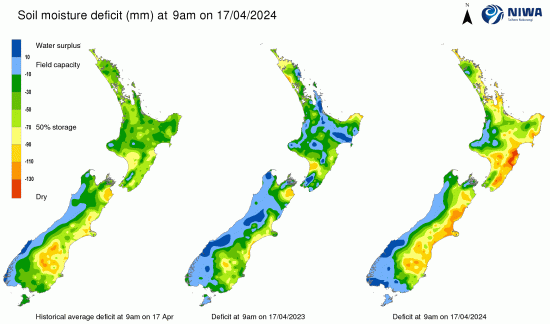
Here are the key things you need to know before you leave work today.
MORTGAGE RATE CHANGES
BNZ has cut mortgage rates today.
TERM DEPOSIT RATE CHANGES
BNZ has also cut TD rates as well. And Rabobank has too.
NO LONGER PATSIES?
Treasury tendered $150 mln in April 2037 bonds today, drawing $353 mln in bids, The winning bidders got a yield that averaged 1.61% and well above the 1.36% achieved at the previous tender for this bond. This isn't the first tender to show a turn up in yield; perhaps investors are tiring of very low yields.
WANTING TO BE OPTIMISTIC
New Zealand retailers struggled in the September quarter, and are hoping for a better fourth quarter to end the year. But despite their optimistic hopes, they feel under strong cost pressures, and if they continue to miss targets there will lilkely see a painful pullback in 2020.
FINDING IT TOUGH
Along the same lines, the ANZ Micro Scope Survey of SME prospects found small firms’ business confidence fell sharply in September to its lowest level since 2008. The composite growth measure for small firms fell to the lowest since 2009, with investment intentions the only growth indicator to stay above 2009 lows. A large fall in hiring intentions suggests material risk to the wider economy.
PARASITIC?
And more evidence that the private sector is struggling comes from the BNZ-SEEK employment survey. The trend in job ad numbers has turned positive, with growth pulses are strongest outside the three main cities. But it is Government-related jobs that lead this growth, and all of those rely on taxing the private sector, which is struggling.
MORE PORRIDGE TIME
Two brothers got prison sentences, sister gets community detention after an Inland Revenue Department prosecution for tax and charities fraud.
WHOSE SPENDING IS LIKELY TO DELIVER BETTER STIMULUS?
New Zealand Taxpayers' Union economist Joe Ascroft says substantially cutting the 30% tax rate on income earned over $48,000 would send a strong message.
AUSSIE JOBLESS UPDATE
In Australia, their jobless rate fell to 5.2% (s.a.) or 5.1% (actual), whatever measure you prefer. The number of full-time jobs rose by +26,160 and the number of part-time jobs fell by -11,440 in September from August. Their participation rate is now 66.1%. (If it was like New Zealand's 70.1% participation rate that would mean another 1.55 mln more Aussies would be in their labour force.)
SAFETY IN COMPLEXITY?
Harvard economists rank countries based on their economic complexity, a measure of resilience and sophistication. Number 1 is Japan, followed by Switzerland, Korea and Germany. The US is #12, Canada is #35, New Zealand is #51 and Australia is a lowly #93 out of 133 countries ranked. Those Harvard economists don't rank digging up dirt very highly.
SWAP RATES FIRM
Wholesale swap rates continued their upward direction today. The two year is up +1 bp, the five year is up +2 bps, and the ten year is up +2 bps. The 90-day bank bill rate is up +1 bp at 1.05%. Australian swap rates are slightly higher than NZ. The Aussie Govt 10yr is up +3 bps to 1.07%. The China Govt 10yr is unchanged at 3.19%. The NZ Govt 10 yr is also unchanged at 1.21%. The UST 10yr yield is down -1 bp, and now at 1.74%.
NZ DOLLAR SLIPS
The Kiwi dollar is little-changed today at just on 62.9 USc. Against the Aussie we are weaker at 92.7 AU cents following their jobs data release. Against the euro we are marginally softer at 56.8 euro cents. That means the TWI-5 has dipped to 68.1.
BITCOIN SOFT
Bitcoin is down today at US$7,975 and that is another -2.3% decline on the day. The bitcoin price is charted in the currency set below.
This chart is animated here.
Daily exchange rates
Select chart tabs
Daily swap rates
Select chart tabs
16 Comments
One big, bright flashing warning about last year’s Euro$ landmine which unfolded beginning last October (extending on into November and December) was how the WTI futures curve flipped from optimistic backwardation (a more balanced market, perceived rising demand for rising supply) into worrisome contango (not only worries about physical imbalances in oil markets, but also dollar liquidity risks becoming embedded within futures prices).
WTI as other global benchmarks this year spiked on September 16 in the wake of the attack on Saudi Arabia’s refineries. That pushed the curve into steeper backwardation. But ever since September 24, as the Fed bungles its way from one ineffective “repo” response to the next, the all-important front part of the WTI curve has been flattening until yesterday when once again, and once again in the middle of October, it flipped over into contango.
Rising liquidity and economic risks being set out in oil and money markets all the while the Fed tries to put the public (back) to sleep with bank reserves and “repo.” Link
What consumers really think of the runaway global warming hypothesis - all the cobalt child labour for nothing. "If consumers’ appetite for SUVs continues to grow at a similar pace seen in the last decade, SUVs would add nearly 2 million barrels a day in global oil demand by 2040, offsetting the savings from nearly 150 million electric cars."
https://www.iea.org/newsroom/news/2019/october/growing-preference-for-s…
Global sales of internal combustion engine (ICE) cars fell by around 2% to under 87 million in 2018, the first drop since the 2008 recession. Data for 2019 points to a continuation of this trend, led by China, where sales in the first half of the year fell nearly 14%, and India where they declined by 10%.(from same article)
Yet despite this drop in sales there was no drop in oil demand. "In fact, SUVs were responsible for all of the 3.3 million barrels a day growth in oil demand from passenger cars between 2010 and 2018, while oil use from other type of cars (excluding SUVs) declined slightly."
https://www.rnz.co.nz/news/national/401188/number-of-people-on-jobseeke…
The number of people on the jobseeker support benefit has jumped by 10 percent in the three months to September, compared to the same quarter last year.
Treasury tendered $150 mln in April 2037 bonds today, drawing $353 mln in bids, The winning bidders got a yield that averaged 1.61% and well above the 1.36% achieved at the previous tender for this bond.
The interpolated IR swap rate is 1.6248%, ~1.86 bps above the zero risk weighted sovereign asset.
Given the UST market is the bench mark global sovereign debt market I can accept your conclusion that NZ follows the longer US.tenors. What disturbs me is the lack of opportunity priced into the NZGS market at ~1.0%+- yields in the 10 year. I noted the other day:
Thus, the decline of interest rates to zero corresponds with a monetary imbalance in favor of deflation, if at least an abundance of deflationary pressures. This is something that Milton Friedman also talked about, particularly in 1998 with regard to Japan. He called it the interest rate fallacy, meaning that low nominal interest rates signify "tight" money conditions, or what would be consistent with significant deflationary pressure. It is and remains a fallacy because economists like those at every central bank around the world have decided instead that low rates are only "stimulus."
To correct this view, Friedman pointed out the basic, non-trivial distinction between a liquidity effect and an income effect. Low rates can be stimulative in the short run (the liquidity effect), but over the long run their persistence means something far different. A yield curve is supposed to be upward sloping given the core time value of money and investing. That arises from opportunity cost, meaning the more plentiful the opportunities the greater the time value and the steeper the curve (the income effect). Yield and/or money curves (the eurodollar curve and even the history of the OIS curve) that collapse and remain that way unambiguously demonstrate that "stimulus" deserves only the quotation marks.
I suspect the witnessed swap compression is a fact of banks not willing to arbitrage due to a desire not to commit capital hungry balance sheet capacity for limited gains in a volatile market.
Does your interest in the UST market extend to calculating (IRR) or least know the cheapest to deliver security pricing the CME 10 year futures contract?
Rob Report for the bays for August out today. Mich lower sales yoy and means still lower than last year. Expecting a bounce in Sept as 236 Kepa Road unit sales should be booked in this month. Otherwise not seeing much of a spring bounce in the more expensive areas of Auckland.
Good luck with that judge!
https://www.stuff.co.nz/national/politics/116644548/judge-to-peters-ans…
it is Government-related jobs that lead this growth, and all of those rely on taxing the private sector, which is struggling
I believe that's the fiscal stimulus we've all been waiting for. Generating employment away from major cities in our economy's largest sector is a better idea than tax cuts. Private businesses in these areas will hire more people and pay more taxes as a result.



We welcome your comments below. If you are not already registered, please register to comment.
Remember we welcome robust, respectful and insightful debate. We don't welcome abusive or defamatory comments and will de-register those repeatedly making such comments. Our current comment policy is here.